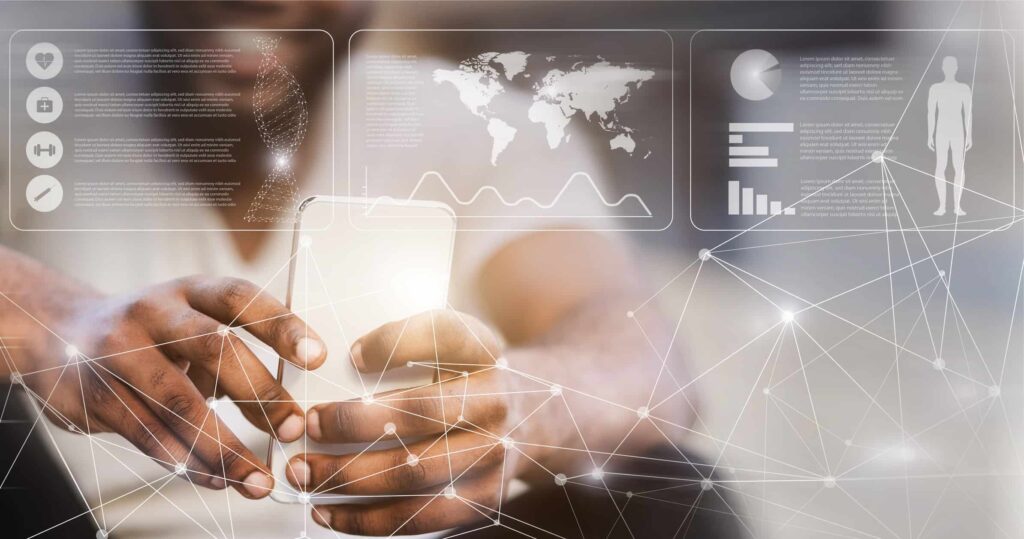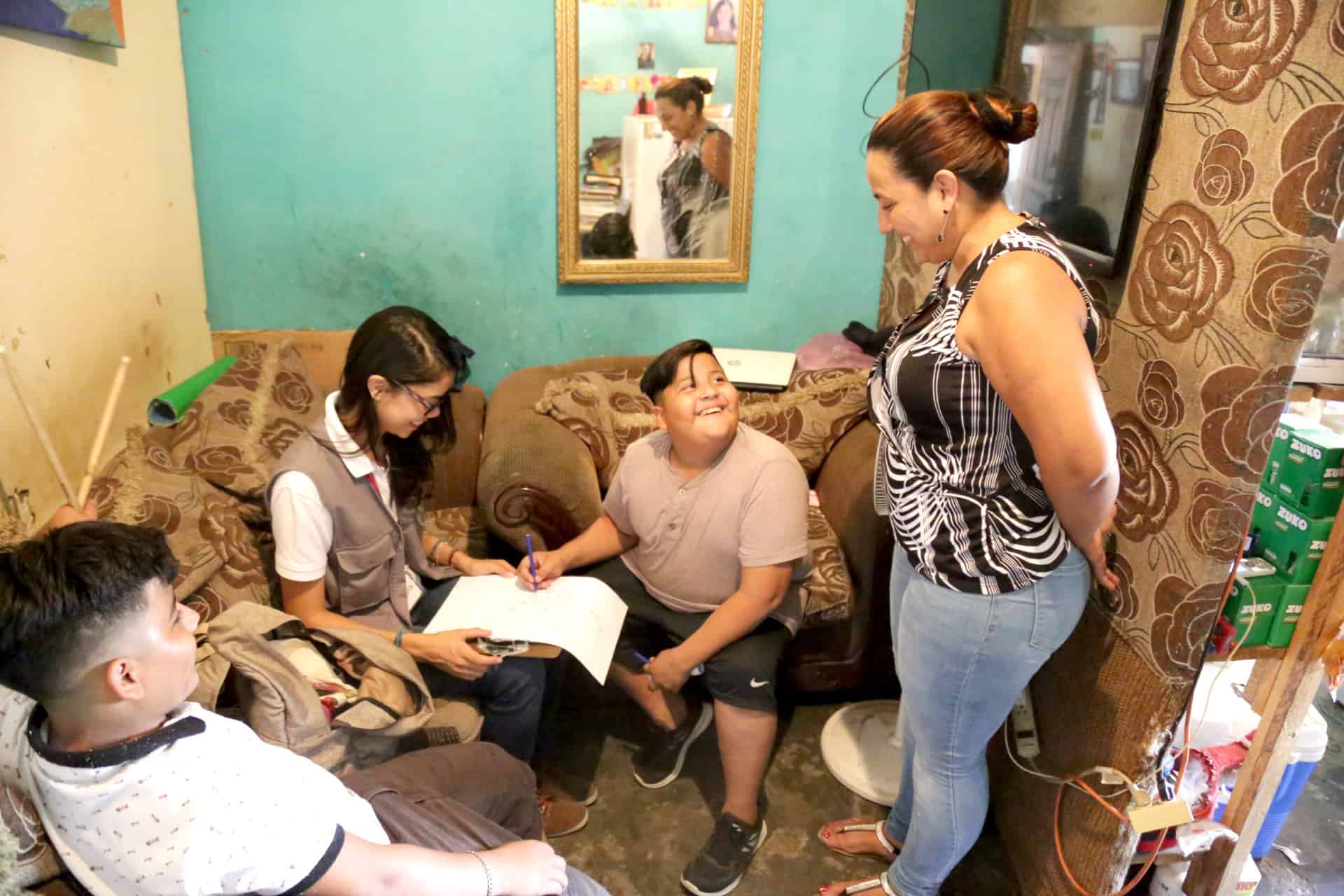
Ddéveloppementexécutants sontnousing "mégadonnées» depuis les téléphones portableset les envois de fonds pour suivre les flux de réfugiés et de migrants.Grâce à celadonnées, ils peut modéliser la portée et l’ampleur d’un « problème » et fournir des informations en temps réel qui permettent aux équipes de conception de programmes d’adapter les interventions. Il peut même fournir ledétails quesont nécessaire à une prise de décision en matière de développement fondée sur des données probantes.
Tout cela est bon; cependant, nous devons souviens-toi de çade telles données est généralementgénéréd'un sous-ensemble de la population. Par exemple, wles présages ne sont pas également représentés dans ces échantillons de données car ils sont nettement moins susceptibles de transporter un téléphone portable, êtreconnecté àl'Internetou actifsur réseaux sociaux.Donc, tL'utilisation de ces données exclut automatiquement des proportions importantes de la population– pas seulement les femmes, mais les personnes âgées, les pauvres, certains groupes ethniques – la liste est longue. À ce stade de la transformation numérique mondiale, le big data souffre de la représentationn ou biais d’échantillonnage et doivent être utilisés avec une extrême prudence pour éclairer la prise de décision en matière de développement.
Mégadonnées- particulièrementdonnées passives telles que les métadonnées des réseaux sociaux et des téléphones portables ou les enregistrements détaillés des appels–est one des principales entrées du modèle ou des données de formation pourIntelligence artificielle(IA) et apprentissage automatique (ML).
Heureusement, L'USAID a lancé un projet indispensablediscussion sur les préjugés sexistes en IA et son effet sur les initiatives de développement. Identifier les manières insidieuses par lesquelles les préjugés sexistes s'insinuent dans le cycle de vie de l'IA et corriger ces préjugés est crucial pour garantir que les futurs programmes favorisent un développement inclusif.. Ce blog se concentre sur l'obtentionAI’s droit sur les données sous-jacentes.

GenreBdéjà dansDéveloppement Data
Les acteurs du développement sont également producteurs d’ensembles de données via les efforts de collecte de données des projets.L'USAID exige désormais que toutes les données du projet soient saisies dans sa bibliothèque de données de développement dans des formats « lisibles par machine ».. Unpeut supposer logiquement que cela les données peuvent être utilisées en IA/ML candidatures. Ce serait une bonne chose si les données entrant dans les applications d’IA étaient exemptes de biais.. Cependant, les données sur le développement sont depuis trop longtemps en proie à des préjugés sexistes.
TL'utilisation d'échantillons où les hommes sont représentés de manière disproportionnée est si répandue dans notre projet–des ensembles de données de niveau que beaucoup d'entre nous ne remarquent même pas. Cela se produit pour des raisons pratiques.
D'abord, il est plus facile d'atteindre les hommes. Dans beaucoupdéveloppementpays, les femmes sont moins présentes dans les espaces publics – que ce soit le résultat de leur"manque de temps» (ils sont beaucoup plus susceptibles d'être à la maison, effectuer des tâches ménagères, prendre soin des enfants, les malades et les personnes âgées) ou en raison des normes de genre. Deuxième, les femmes ont tendance à être plus protégées. Les normes sociales restreignent souvent les hommes–interaction féminine et font hésiter les familles à accueillir les enquêteurs à la maison. Ces normes rendent également plus probable la présence d'un homme lors d'un entretien., etil est beaucoup plus probable que les femmes soient moins ouvertes dans les discussions où les hommes sont présents.Dans le cadre de groupes plus importants, femmessont plus susceptibles deêtre déférent aux hommes.
Que les données soient collectées par des moyens traditionnels ou en s'appuyant sur des sources de Big Data, le biais en faveur des hommes dans les données d'échantillonnage est souvent dûpi incontesté. On justifie l'utilisation de ces données en se disantquec'est le mieux que nous puissions obtenir. Ainsi, nous laissons un espace aux préjugés sexistes pour avoir un impact sur la façon dont nous interprétons les données.BLes données collectées conduisent à une programmation qui répond aux besoins de quelques-uns. (généralement des hommes)=et renforceet se propageinégalités de genre existantes, tousalors quedonnering l'illusion d'avancer développement objectifs.
Lutter contre les préjugés sexistes dans l’utilisation du Big Data
Clôture la fracture numérique pourrait un jour rendre le Big Data moins vulnérable aux biais d’interprétation. En attendant, c'estnotre responsabilité de reconnaître d’abord les limites de l’utilisation du big data pour capturer la réalité du terrain, ainsi que reflétant le comportement des femmes et d'autres personnes qui sont moins susceptibles de porter un téléphone portable ounousing Internet.
Nous devons alors éviter de prendre des décisions de programmation basées uniquement sur des données dont nous savons qu’elles sont biaisées en faveur d’un sous-groupe de la population.. Ce ne sont pas de grandes solutions technologiques, mais si mis en œuvre avec succès, ils minimiseraient le risque que les préjugés sexistes s'insinuent dans la façon dont nous utilisons le Big Data et conduiraient à des décisions de programmation plus inclusives..
Corriger pourla surreprésentation des hommes dansles ensembles de données doivent être constitués comme une question de donnéesqualité et bonnes pratiques, juste comme ce serait le cas s’il y avait d’autres types de distorsions dans les données.Til donne des donnéesensemble doit être examiné pour s'assurer quec'est représentatif -en celailanombre égals des hommes et des femmes. jef il est biaisé en faveur des hommes, alors le projet doit collecter davantage de données auprès des femmes pourcorrect pour la sous-représentation des femmes.

Prendre des mesures positives
Taujourd'hui, noussont de plus en plus granulairescompréhension de l'ampleur de la fracture numérique et de l'accès au numérique. Nous pourrions appliquer ces informations pour développerdes indicateurs statistiques pour permettre aux collecteurs de données ou aux éditeurs de s'ajuster au biais d'échantillonnage dans des pays spécifiques.
Si rien d'autre, nous devrionsexigerque tous les ensembles de données carriére étiquettes d'avertissementqueindiquer clairement quelle proportion d’hommes et de femmes sont représentés dans l’échantillon. L'avertissement mettrait en garde ceux qui utilisent les données surc'estlimiteset rend plus difficile pour les praticiens du développement de"inconsciemment"prendre des données auprès d’un sous-ensemble de la population et extrapoler les résultats à l’ensemble de la communauté.
Dans les scénarios où les éditeurs de données et les utilisateurs se connaissent, il existe un autre moyen simple de dénoncer les préjugés: garantir que toutes les parties – celles qui collectent les données et celles qui les utilisent – développent une compréhension commune des données, ses limites et quelles conclusions peut-on en tirer.
Dans mon expérience en tant que conseillère en genre et inclusion, cet exercice présente plusieurs avantages, le dont le plus important est d'interrompre"affaires comme d'habitude» et la tendance à s'appuyer sur des données biaisées. Cela crée un espace permettant aux équipes de projet de reconnaître la nécessité de développer des programmes adaptés aux besoins et aux intérêts des communautés rendues invisibles lors de l'utilisation de ces données.. Sans un tel processus, Les équipes de projet ne reconnaissent souvent pas du tout la nécessité de prendre en compte les femmes ou le genre – surtout si ellesne le faites pas considérez-le comme un projet « genre ».
Nous recommandons égalementleproduction collaborative d'un Compendium sur les préjugés sexistes dans l'IA pour le développement àexposer où et comment les préjugés sexistes manifeste et disques le potentiel négatifrésultatsen programmation de développementsecteurs. Ce cun être utile inviter discussion etaugmenterconscience deles préjugés sexistes dans les données utilisées pour la prise de décision en matière de développement.
Nous ne le faisons pasavoirtoutes les réponses, mais nous savons que plusnousdéballeret analeouidsources de données unsd entrées dans des modèles IA/MLs, intégrer des processus qui nous obligent àexplorer collectivement comment nous les interprétons et les utilisons soigneusement pour éclairer notre prise de décision, pluséquitablenotreles résultats seront.

Rebecca Sewall est le conseiller principal, Genre et inclusion. Les membres du Laboratoire de développement créatif, promeut et canalise de nouvelles stratégies pour relever les défis du développement grâce à la science, technologie et les médias, contribué à ce blog.